Onimusha 2: Samurai's Destiny was an odd duck for the franchise. Following the successful first game, Onimusha 2 is known as "The One with Jean Reno," its lack of Samanosuke as the protagonist, and more experimental air means it didn't stand out as much. I always had a fond spot for it because it took the franchise along the path of "Samurai Movie with Demons" that the new Onimusha: Way of the Sword seems to be aiming for. I'm happy to reexperience this somewhat awkward middle child with Onimusha 2 Remaster and find that it's still as fun as I remember.
Onimusha 2 opens up not long after the events of the first game. The defeat of the evil demon lord Fortinbras has left the demonic forces of the Genma under the cunning leadership of Nobunaga Oda, who is running a campaign of terror across Japan. Unfortunately for Nobunaga, one of the victims of his assault is the Yagyu Village. Jubei Yagyu, a talented samurai with Oni blood, is the sole survivor who promptly sets out on a quest for revenge. Along the way, he'll encounter several allies who share his goal, and they work together to bring down Nobunaga once and for all.
The story of Onimusha 2 isn't very complex, and it doesn't need to be. There's a bad guy with demons, so players must kill those demons. What makes it stand out is that it has a number of branching cut scenes and potential story changes based on which of Jubei's allies he spends time with and gives gift to. Befriend a character, and they might help him in combat, or the story might change based on who he has his highest level of friendship with. They're relatively minor changes, but they add some nice variety to replaying the game.
Much like the original game, the best way to describe Onimusha 2 is Samurai Resident Evil. It is built around the same basic premise of going into a dangerous location filled with monsters and fighting bad guys, solving puzzles, collecting items and properly collecting resources to survive. It's far more akin to Resident Evil 3 and onward in that it has a heavier emphasis on combat and action than it does on horror and spookiness. It fits firmly in the middle ground between Resident Evil and Devil May Cry.
Combat is straightforward. You have an attack button, a block button, and a magic attack button. Your attack button slashes your currently equipped weapon, which can range from a sword to a spear to a hammer. The Triangle button uses a special elemental attack tied to your currently active weapon, which is usually a powerful single-target attack or an AoE room clearer. Block ... well, it blocks. Combat isn't too complex, and while you can unlock new moves for your weapons, they're mostly bonus attacks that you can mix in with the hacking-and-slashing to get a small advantage. You also can use ranged weapons, but they're mostly for specific enemies or puzzle-solving rather than a natural part of combat.
Probably the coolest combat feature is the Issen mechanic. If you attack just as an enemy attacks, you'll perform a powerful critical hit attack, during which the screen flashes white and the enemy takes fatal damage (or near-fatal, in the case of several strong enemies). This means you instantly defeat tough foes, and you get more rewards for doing so. If multiple enemies are attacking at once, you can chain together Issens to tear through enemy squadrons with a single slash, fitting the game's samurai movie aesthetic. On the hardest difficulty, this is the only way to defeat an enemy.
Issen is a really fun mechanic that rewards mastery but isn't required. You can finish the game on most difficulties without touching it except by accident, but there's an undeniable thrill in zooming through entire masses of enemies with pixel-perfect sword strikes in a way that captures the fun of a samurai quick draw. It's good enough that it elevates what could otherwise be a standard combat system.
In addition, soul collection is a major part of the game. By pressing the Circle button, you can absorb souls released by enemies. While you can do this at any time, you're encouraged to work it into regular combat. You can use absorbed souls to upgrade your character, but they also grant additional magic, health, and the new purple Onimusha orbs. Collecting these last orbs allows you to temporarily transform into a super-powerful Onimusha form, which can often be enough to turn the tide of combat.
Onimusha 2 is a lot like a gussied-up Onimusha 1. They share the same basic concepts, but the sequel has more weapons, more enemies, and more gameplay features. Perhaps the most distinctive part about Onimusha 2 is that the early part of the game takes place around town, where you hang out with party members, give them gifts, and find small side-quests. There's a surprisingly complex trading system involved with gift giving, where you can get items by trading with your allies, who like/dislike certain gifts. The gifts they like might change based on where they are, what point of the story you're at, and how much they already like you.
The town is a neat feature but feels like it goes against Onimusha 2's more traditional Resident Evil design. You won't get enough resources to purchase all of the gift items by playing normally, so you feel like you have to farm generic enemies outside of town to buy all of the items. It also gets sidelined as the game goes on. It doesn't get in the way, but I can understand why Onimusha 3 returned to a more linear experience.
Samurai's Destiny makes some noteworthy gameplay changes. While the original game's tank controls are available using the d-pad, you can now use a more modern control scheme by moving with the analog stick. I'm torn about this. In terms of raw playability, it's a huge improvement because you can choose a direction and move accordingly. However, it does have a few flaws. It feels awkward when you move from one camera angle to another, which is a common problem with adding modern controls to old-school fixed camera angles. More noteworthy is that it impacts the game's difficulty curve because avoiding attacks becomes much easier.
Other changes are minor but still noteworthy. Players can instantly swap weapons rather than having to go into a menu. This is nice since it lets you vary weapons more, rather than sticking with one weapon. You can also transform into your Onimusha super form at will. In the older versions of the game, you automatically transform when you picked up five purple orbs. This is a fantastic quality of life change, even if it technically makes the game easier. The popular tactic in the old game was to farm four souls before a boss room and wait for the fifth to drop mid-fight, so this is a nice change.
One of the other big changes is that most of the unlockable content is now available from the outset: bonus costumes, minigames, and harder difficulty modes. Considering the game has a bucketload of unlockable minigames and content, it's a nice feature to be able to access without trouble. This includes a new harder difficulty mode, where everything kills you in one hit and a new easier mode for those who find the older flavor of gameplay to be too punishing.
Onimusha 2 looks nice enough, but it's still very visibly a PS2 game with a shinier coat of paint. The original game's use of real-world actors as models for the characters and high-quality backgrounds meant it was one of the better-looking PS2 games on the market, and the remastered version largely captures that. The environments and enemies look excellent, but some of the human characters still look a tad odd. The voice acting is functionally unchanged, with a reasonably solid set of Japanese voice actors complementing a cheesy and ridiculous dub.
Onimusha 2: Samurai's Destiny is a strong update to a good game. It adds all of the polish and updated features I had wanted. Most of the problems I have with the game are ones that were true of the original release, too. It's a darn fun little follow-up to Onimusha: Warlords, which expands the gameplay without losing the fun feudal Japanese Resident Evil vibe the franchise has always had going for it.
Score: 8.0/10
More articles about Onimusha 2: Samurai's Destiny


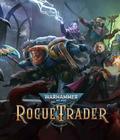
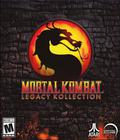
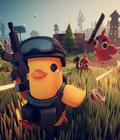

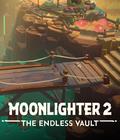
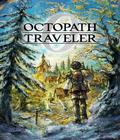
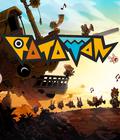
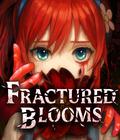

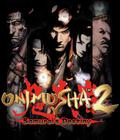 Onimusha 2: Samurai's Destiny is an enhanced version of the classic action game that was released in 2002 and brought the franchise to new heights.
Onimusha 2: Samurai's Destiny is an enhanced version of the classic action game that was released in 2002 and brought the franchise to new heights.



































